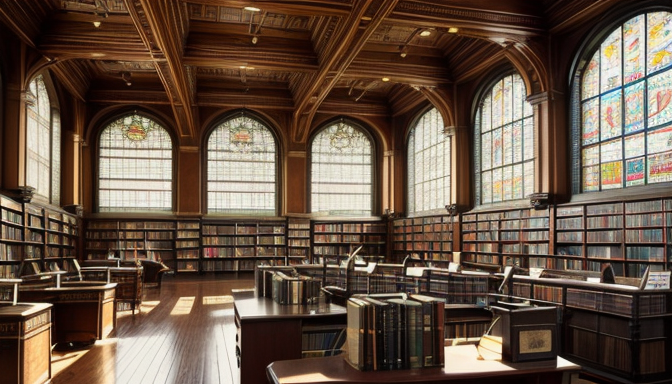Literary movements are not just dusty chapters in history books; they are the vibrant threads that weave together the fabric of our modern literary landscape. When you dive into the world of literature, understanding these movements can feel like unlocking a treasure chest filled with insights about our culture, society, and even ourselves. Think of literary movements as the heartbeat of literature, each pulse reflecting the emotions, struggles, and aspirations of its time. Why should you care? Because they shape the stories we read, the characters we relate to, and the themes that resonate with us.
Take a moment to consider how Romanticism emphasized individual emotion and nature, or how Modernism broke away from traditional forms to explore the chaos of the 20th century. These movements didn’t just influence writers; they sparked conversations that continue to echo today. By studying them, you gain a clearer lens through which to view contemporary issues and artistic expressions. It’s like being given a map to navigate the complex terrain of literature and culture.
In essence, literary movements are a reflection of societal evolution. They highlight how art responds to the world around it, providing a mirror to our changing values, struggles, and triumphs. So, the next time you pick up a book, remember: you’re not just reading a story; you’re engaging with a rich history that informs our present and shapes our future.
The Impact of Literary Movements on Modern Writing
Literary movements are like the heartbeat of literature, pulsing with the energy and emotions of their time. They have profoundly influenced modern writing styles, themes, and techniques, shaping the way we tell stories today. Just think about it: without the Romantic movement, would we even have the deep emotional expressions found in contemporary poetry? Or without Modernism, would our novels have embraced such complex narratives and fragmented structures? These movements act as a foundation, allowing writers to build upon or rebel against established norms.
Understanding these movements is crucial for readers who wish to appreciate the evolution of literature and the diverse voices that contribute to today’s literary landscape. For instance, the emergence of postcolonial literature has opened doors to narratives that explore identity, culture, and power dynamics, giving voice to those who were historically marginalized. This evolution reflects a broader trend where literature becomes a platform for social commentary, challenging societal norms and provoking thought.
Moreover, literary movements often introduce new techniques that writers adopt and adapt. From the stream-of-consciousness style popularized by authors like James Joyce to the minimalist approach embraced by contemporary writers, these innovations keep literature fresh and engaging. So, the next time you pick up a book, consider how the threads of these literary movements weave together to create the rich tapestry of modern writing.

Connecting Literary Movements to Social Change
Literary movements are not just chapters in the history of literature; they are vibrant reflections of the societies from which they emerge. Think of them as the heartbeat of culture, pulsating with the rhythms of change. When you dive into a literary movement, you’re not just reading a story; you’re peering into the soul of a time period. For example, the Romantic movement emerged during the Industrial Revolution, capturing the tension between nature and the rapid advancement of technology. This literary shift was a response to the societal upheaval, emphasizing emotion and individualism over the cold logic of industrialization.
Moreover, literary movements often highlight pressing social issues, acting as a mirror to the struggles and triumphs of their times. The Harlem Renaissance is a prime example, showcasing the voices of African American writers and artists in the early 20th century. This movement was not just about art; it was a powerful statement against racial injustice, pushing for equality and recognition. By connecting literature to social change, we can appreciate how authors use their craft to challenge norms and inspire action.
In essence, by studying these movements, we gain insight into the cultural shifts that shape our world today. They remind us that literature is not created in a vacuum; it is deeply intertwined with the fabric of society. So, the next time you pick up a book, ask yourself: what social changes influenced this story? You might be surprised by the answers you find!
Frequently Asked Questions
- What are literary movements?
Literary movements are groups of writers and thinkers who share similar themes, styles, or philosophies during a specific period. They often reflect the cultural, social, and political contexts of their time, influencing how literature is created and understood.
- Why should I care about literary movements?
Understanding literary movements can enhance your appreciation of literature. They provide a framework for recognizing how societal changes shape artistic expressions, allowing you to see the deeper connections between the text and the world around you.
- How do literary movements impact modern writing?
Literary movements have paved the way for various writing styles and techniques we see today. By studying them, you can trace the evolution of themes and voices in literature, helping you understand the richness of contemporary works.
- Can literary movements influence social change?
Absolutely! Many literary movements respond to social issues, acting as a mirror to society. They can inspire change by raising awareness of cultural shifts and encouraging readers to think critically about their surroundings.